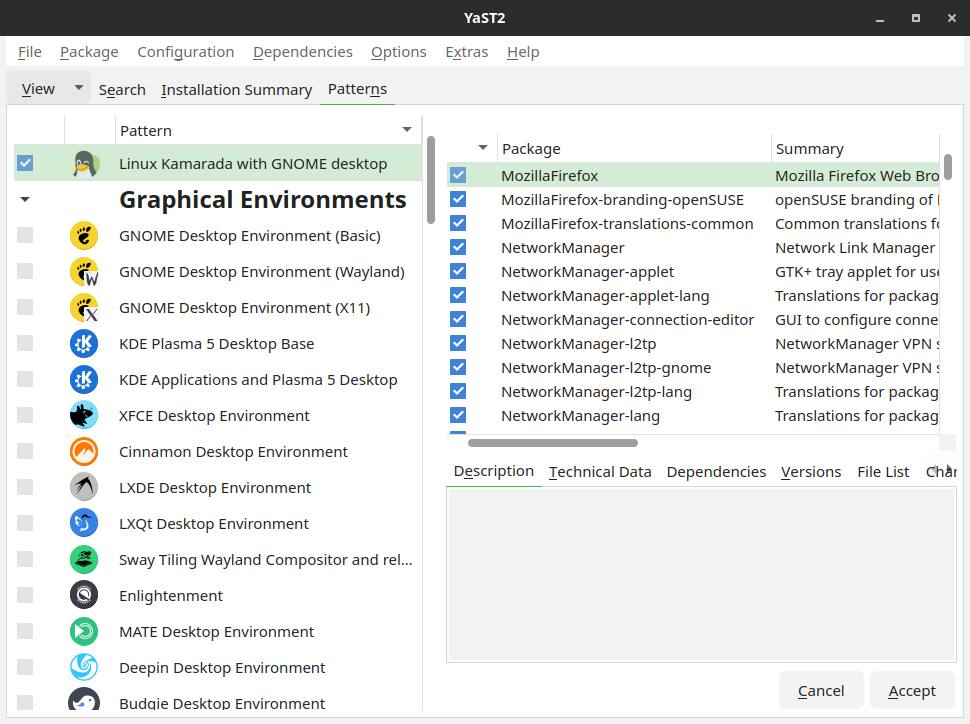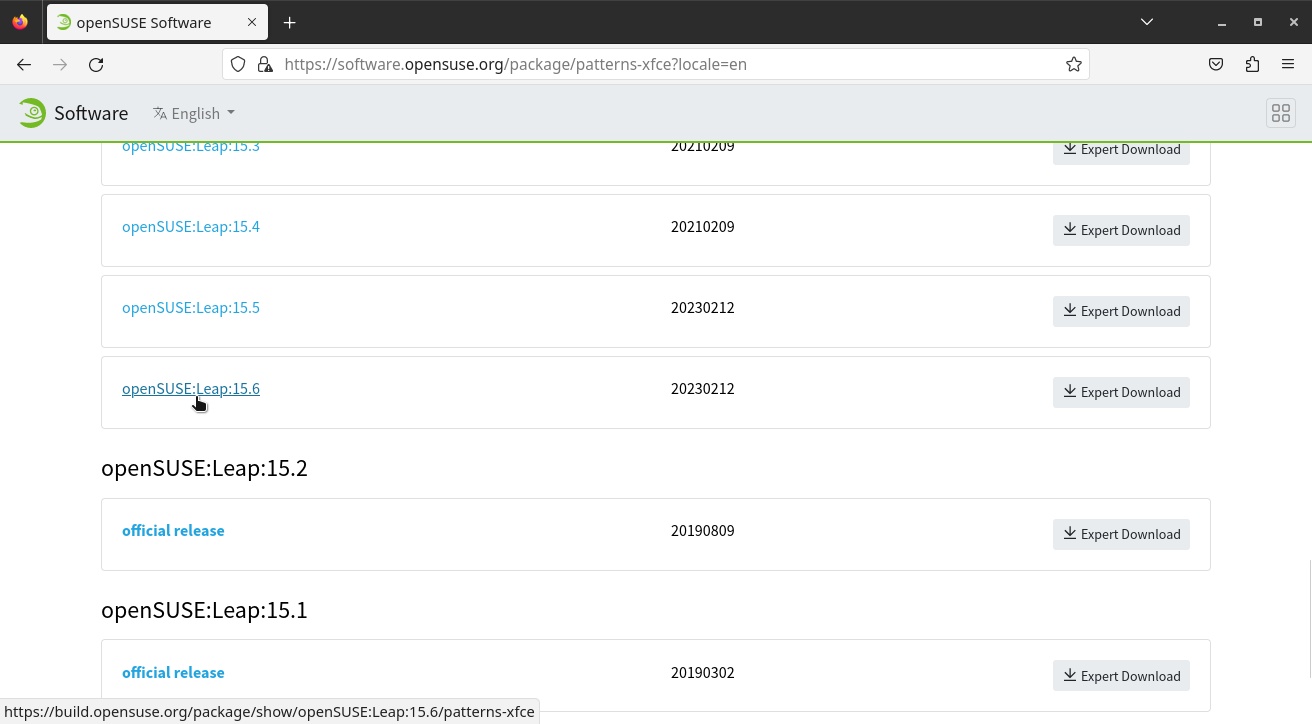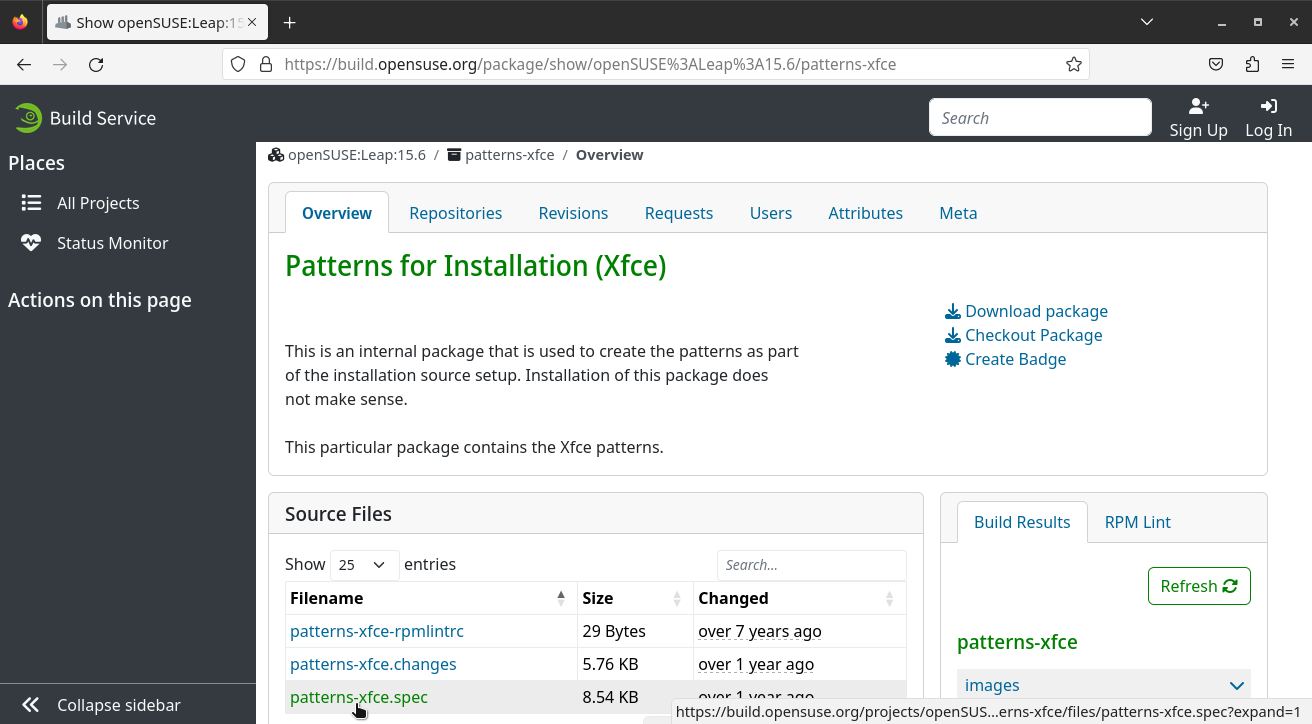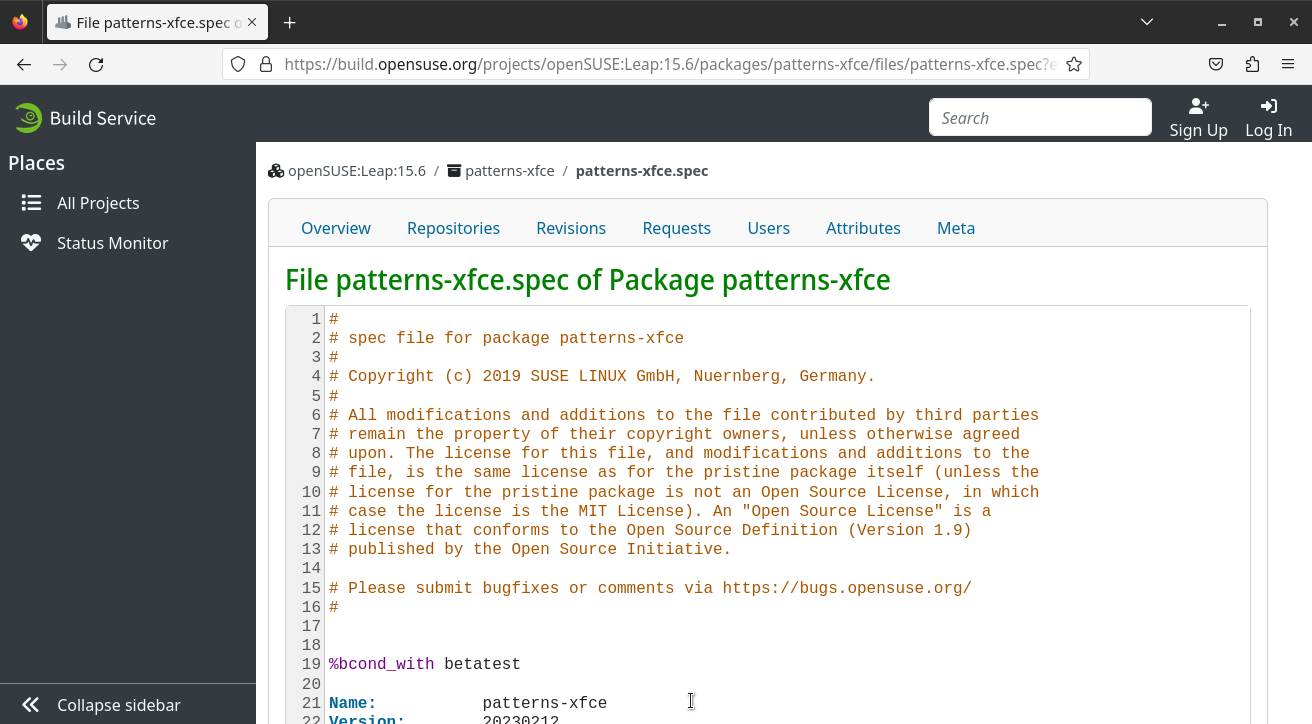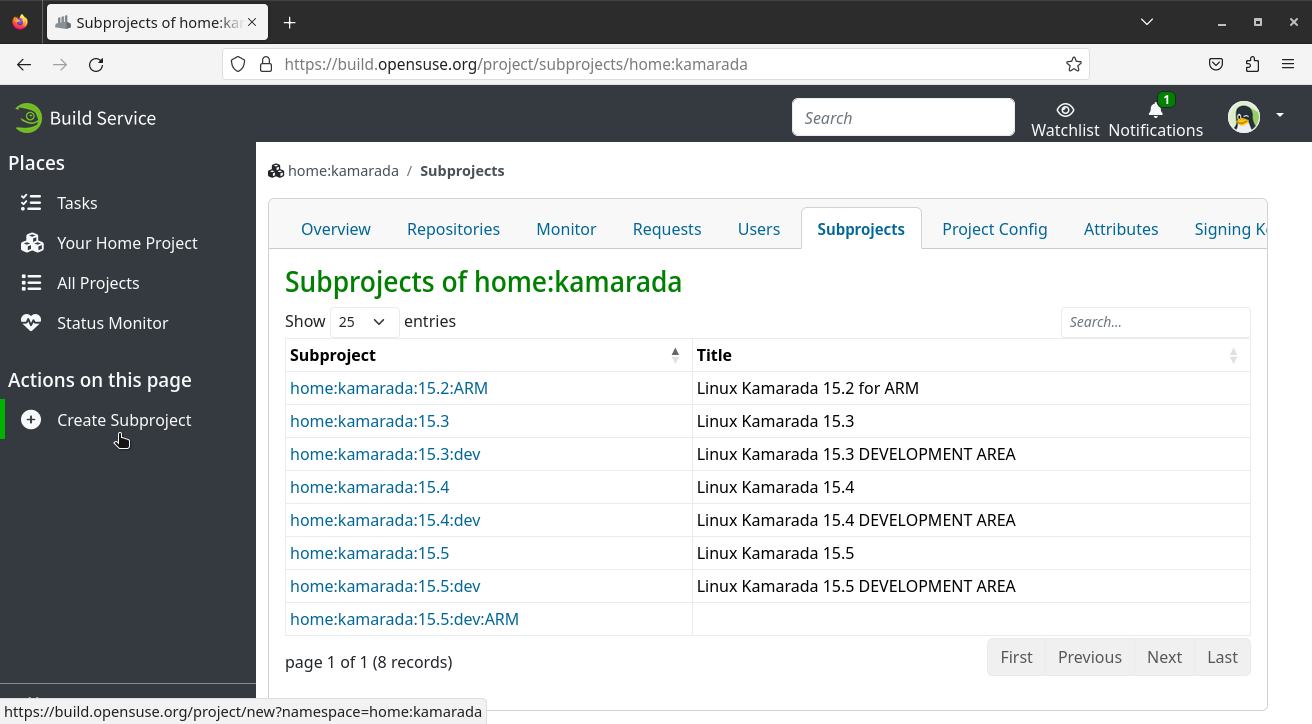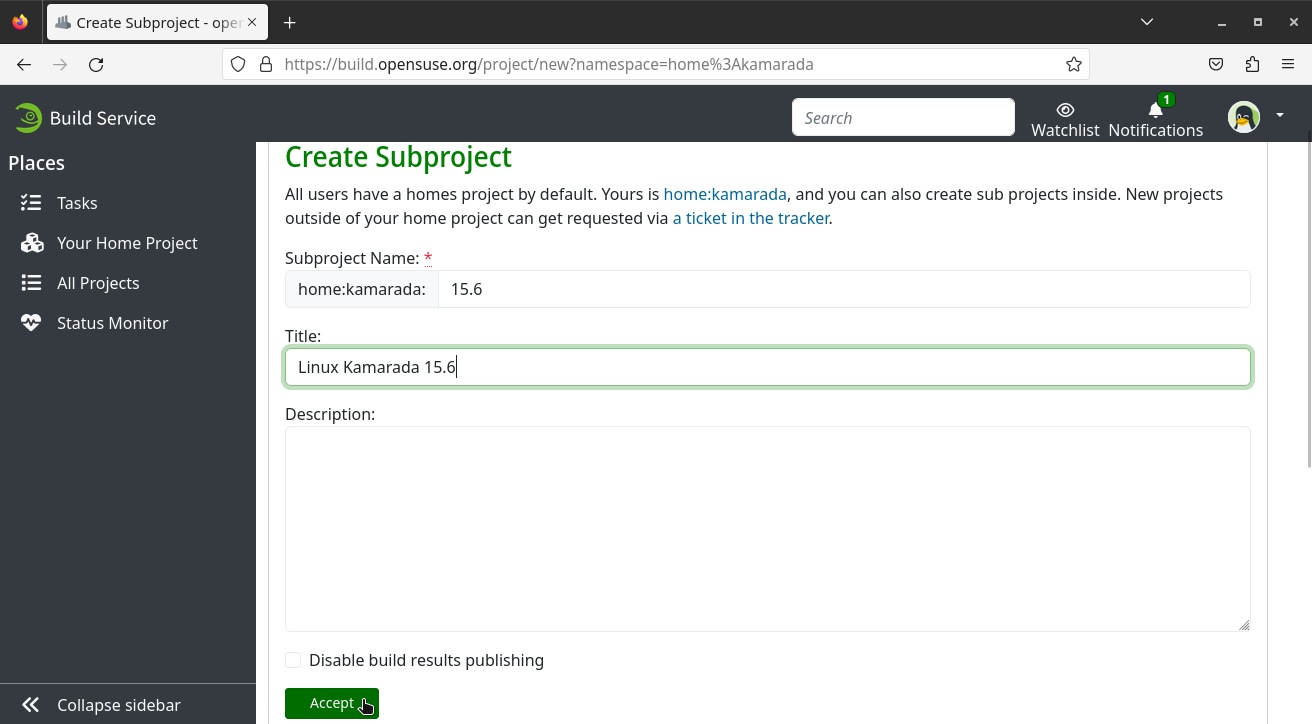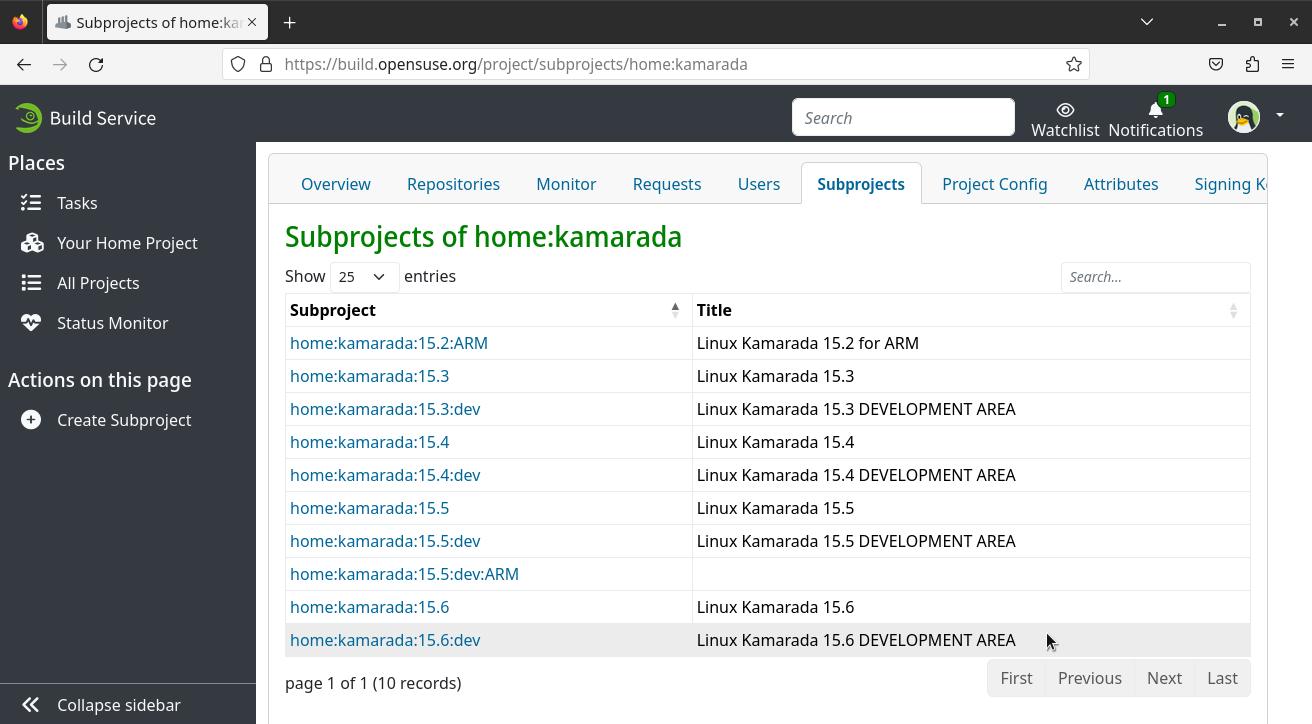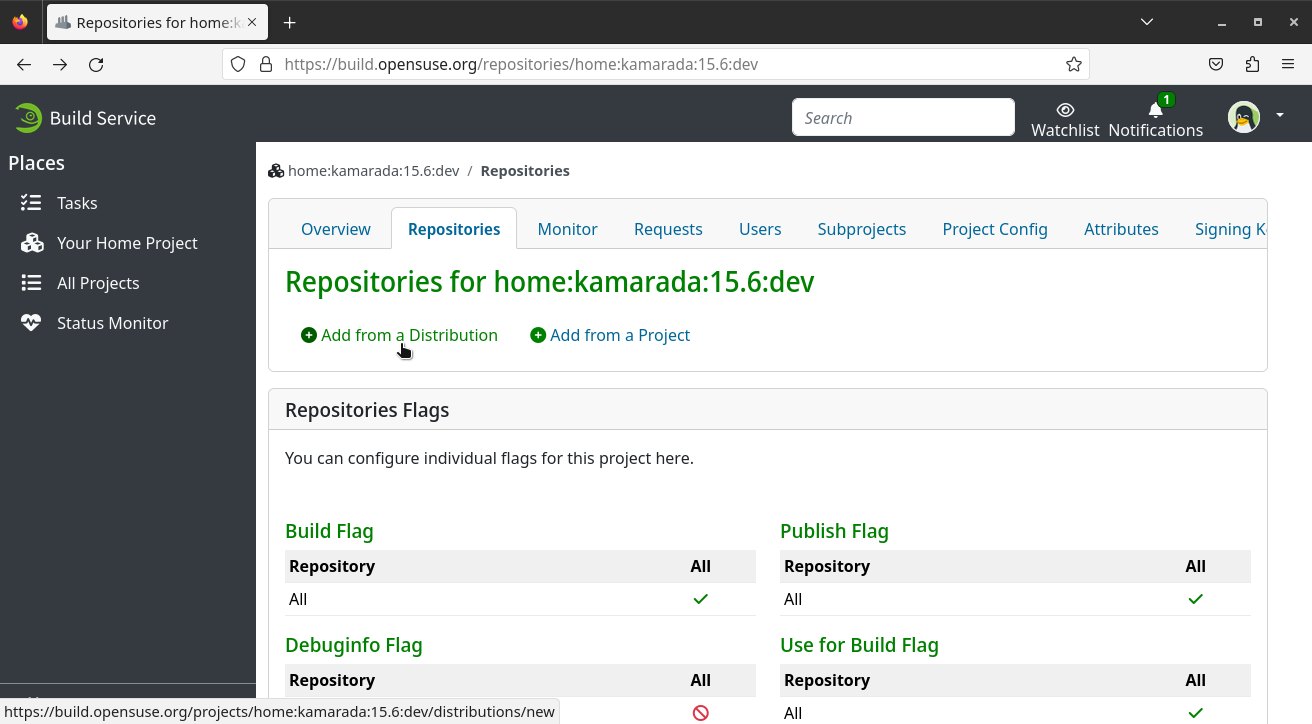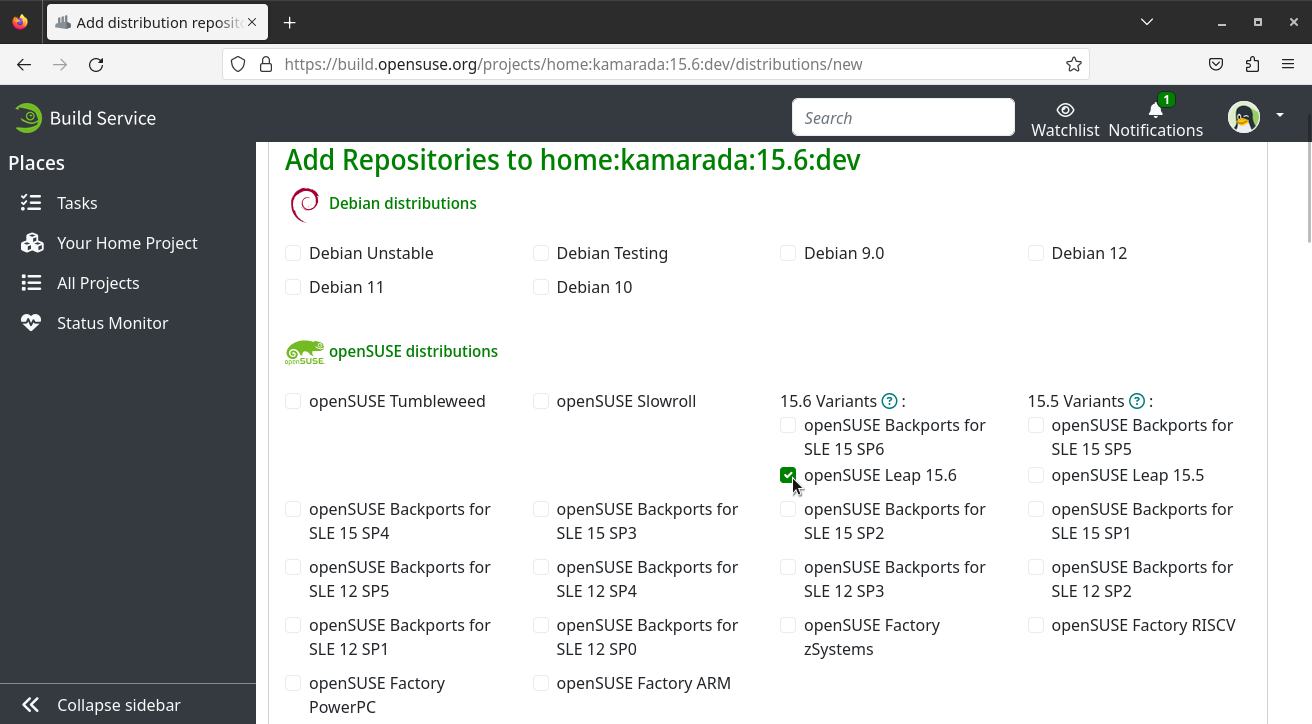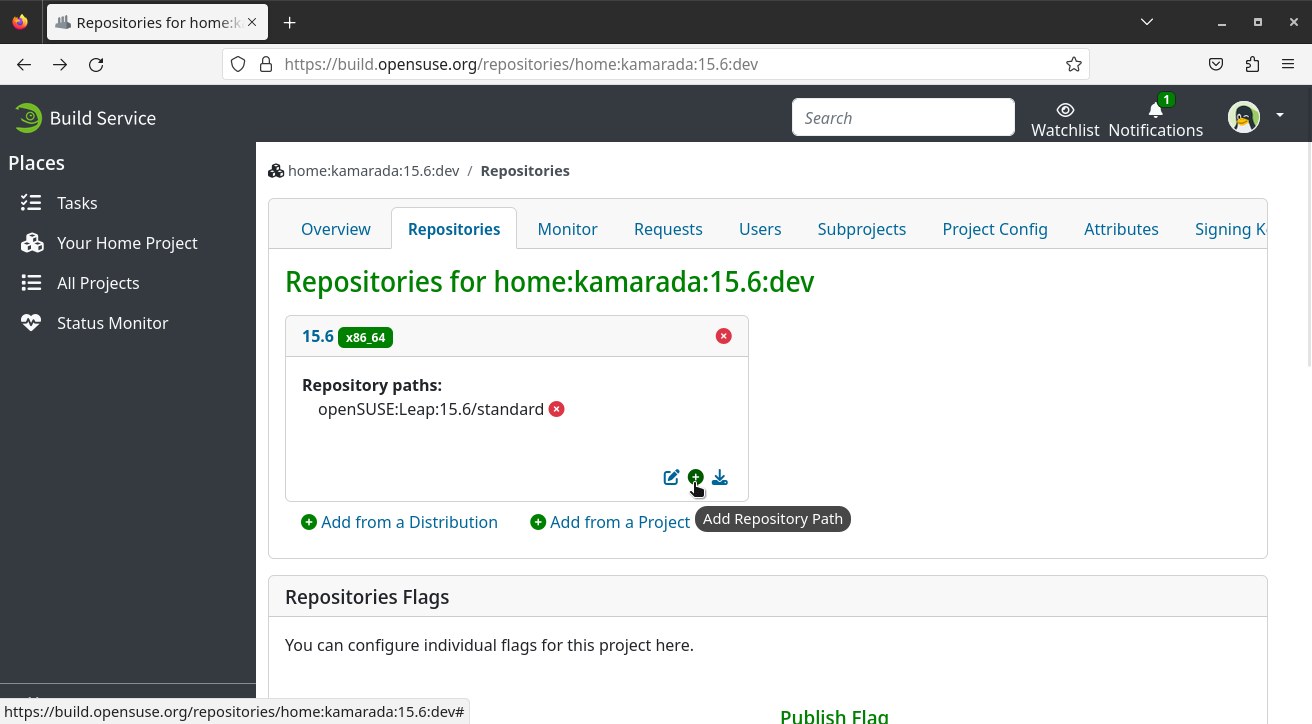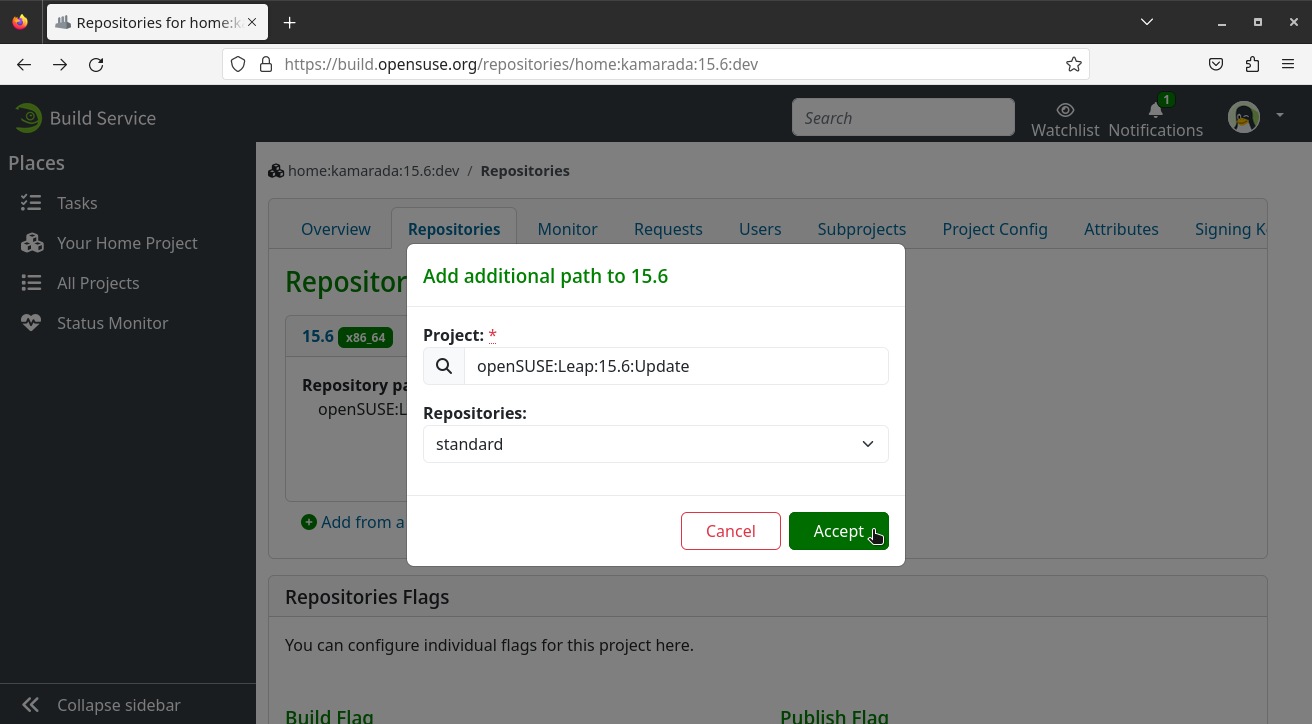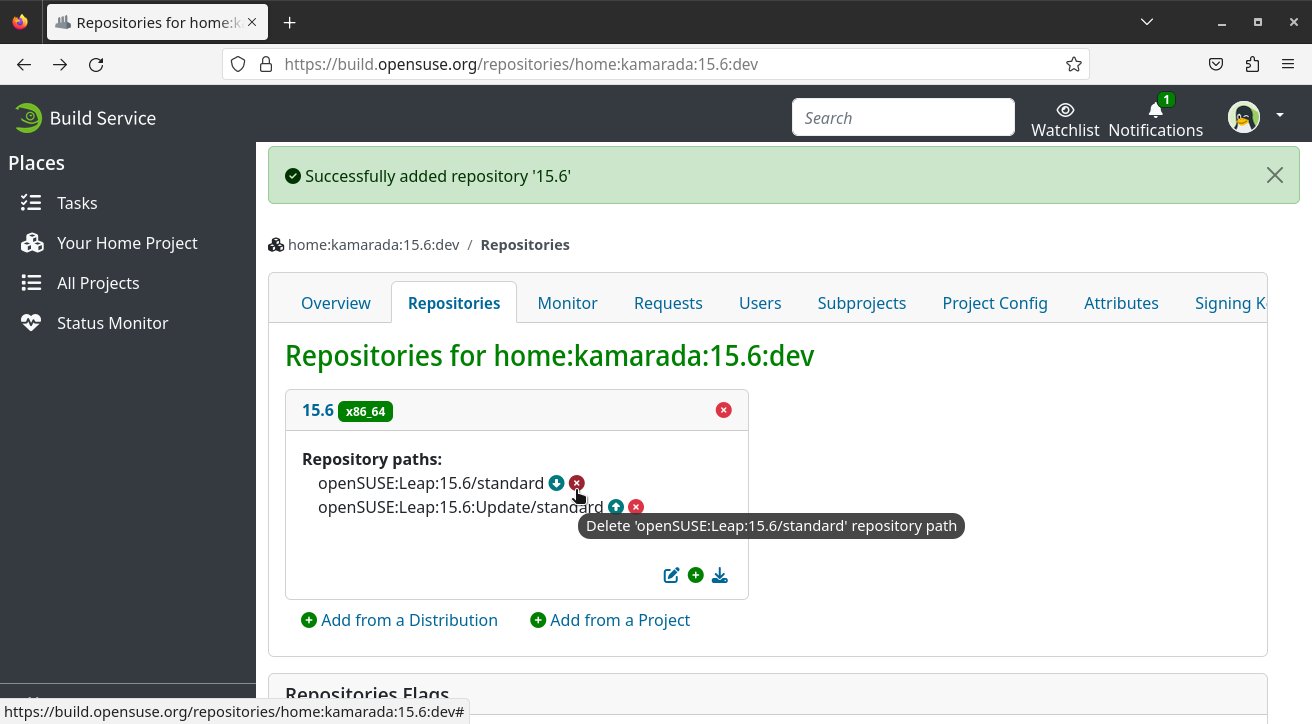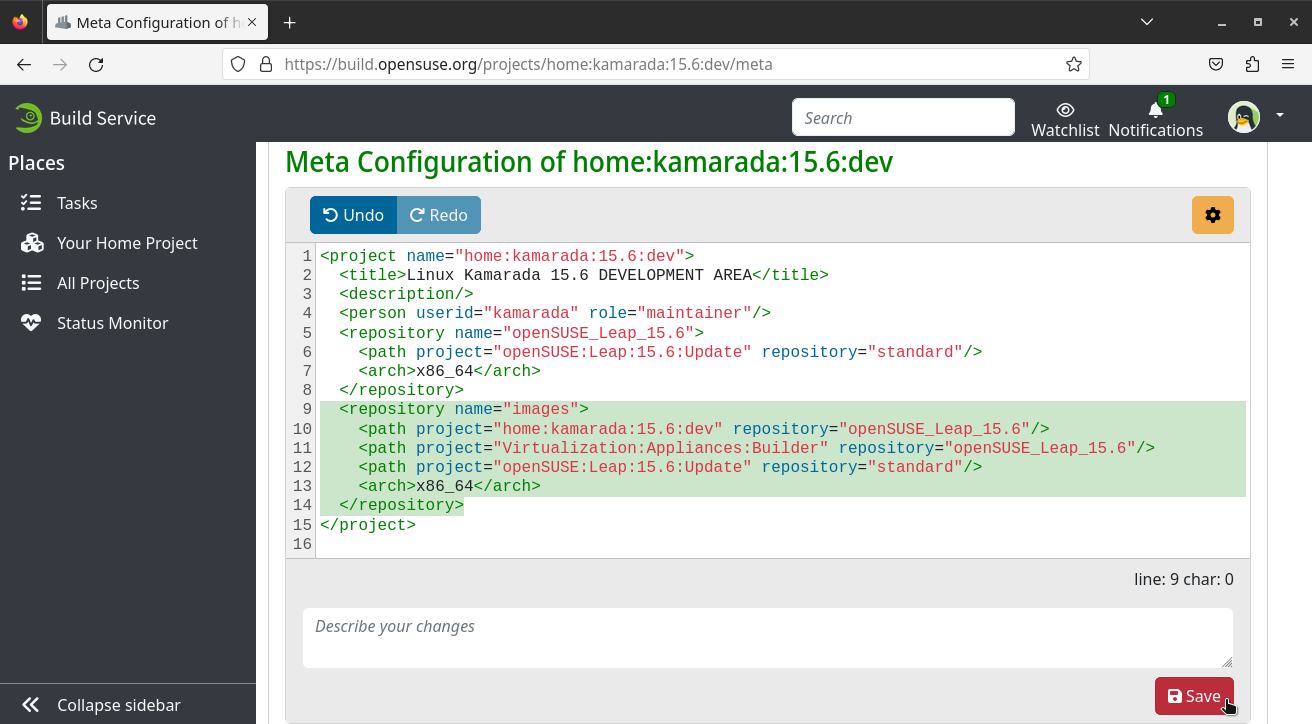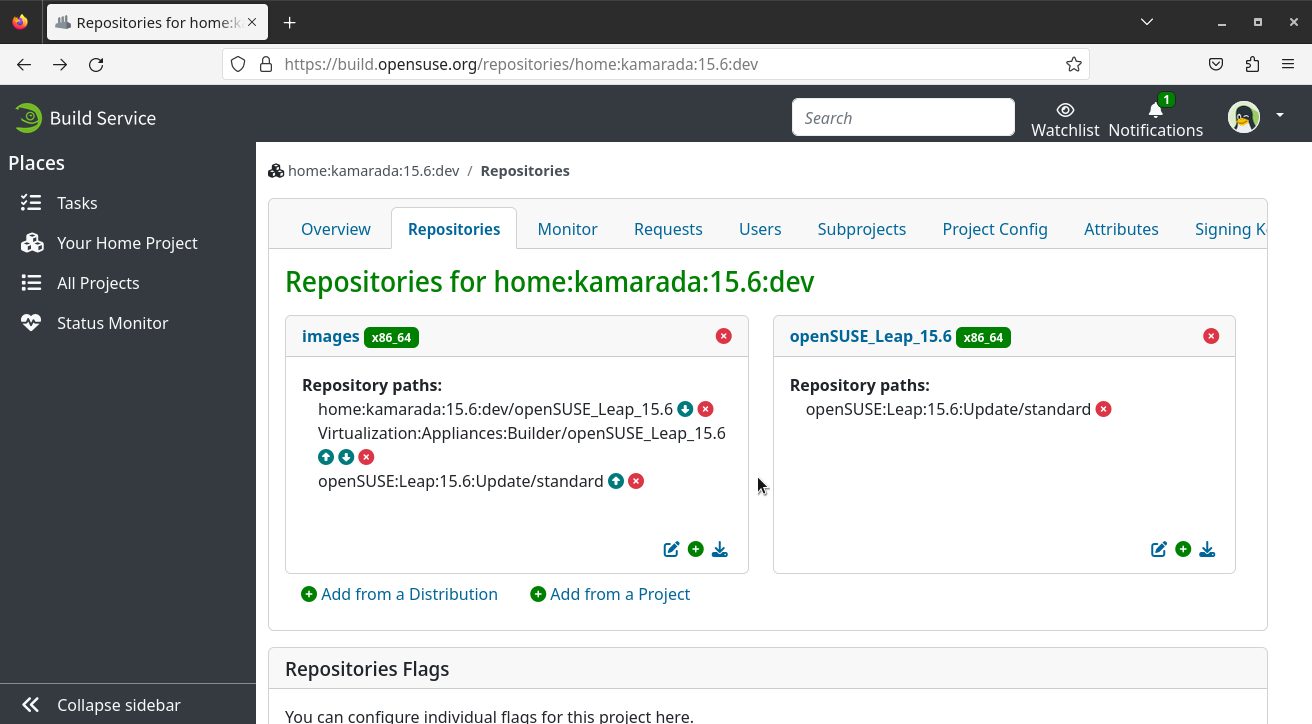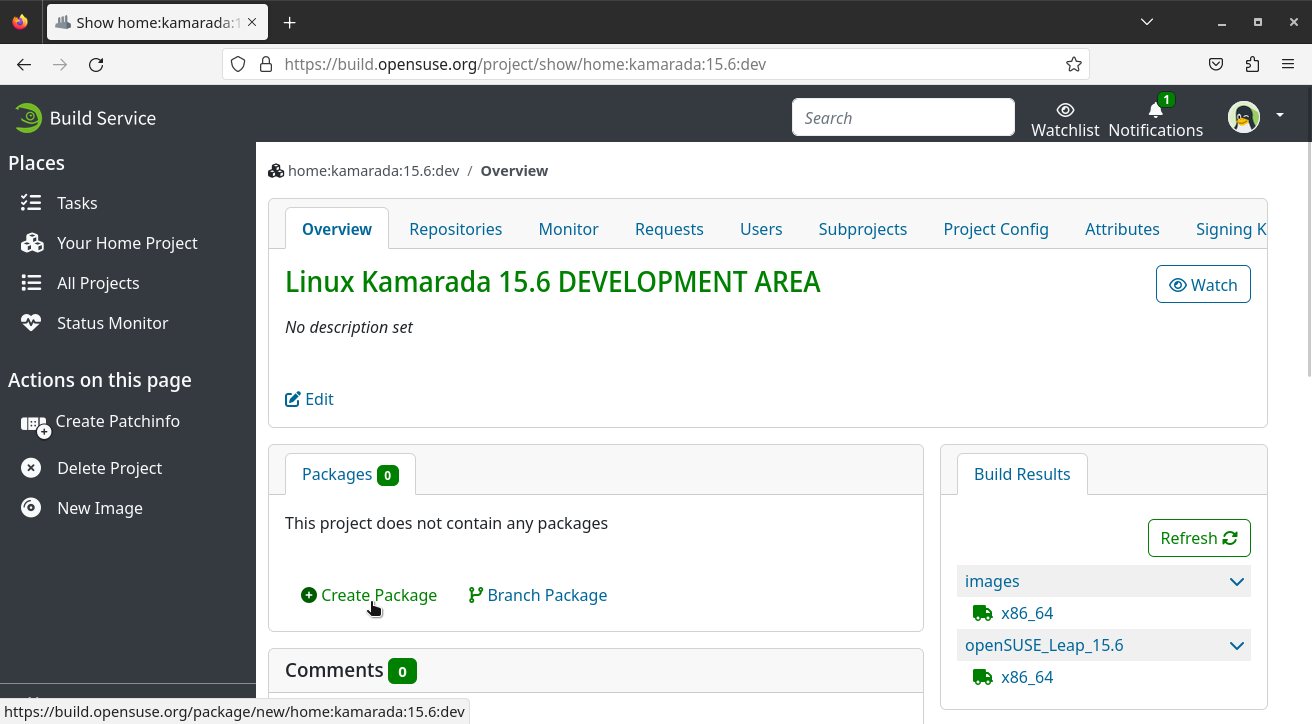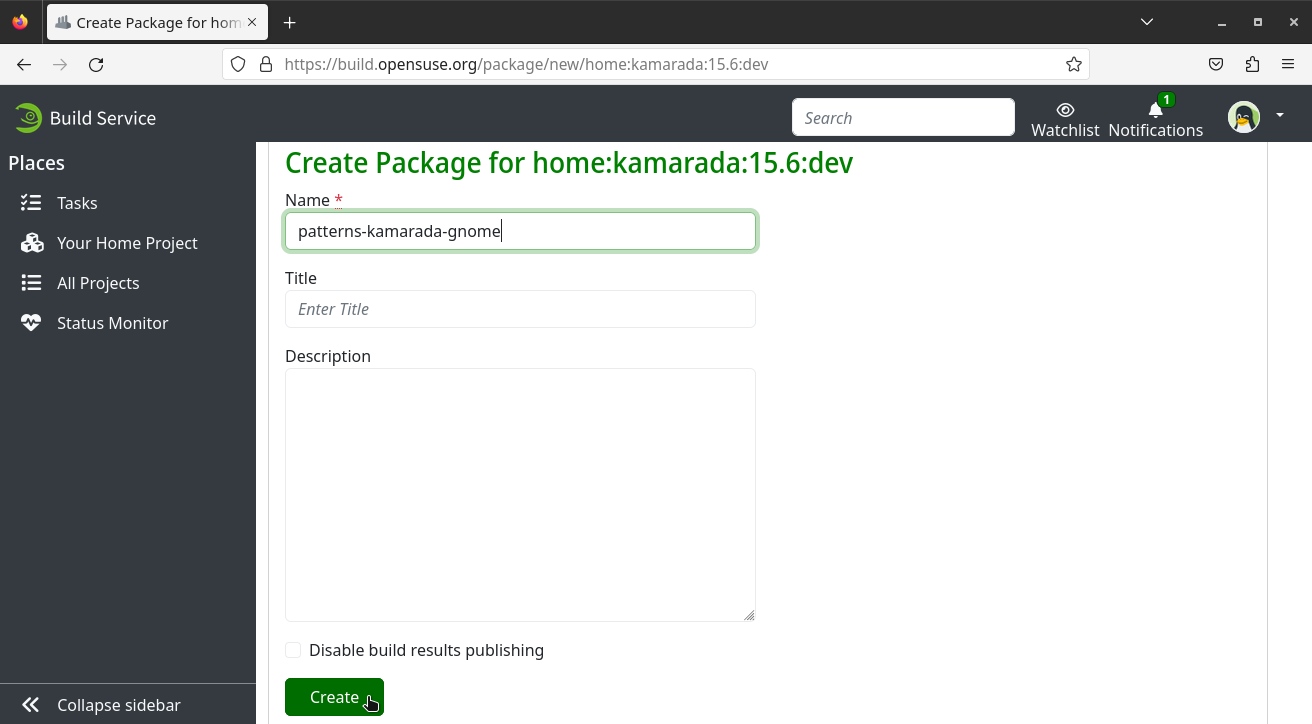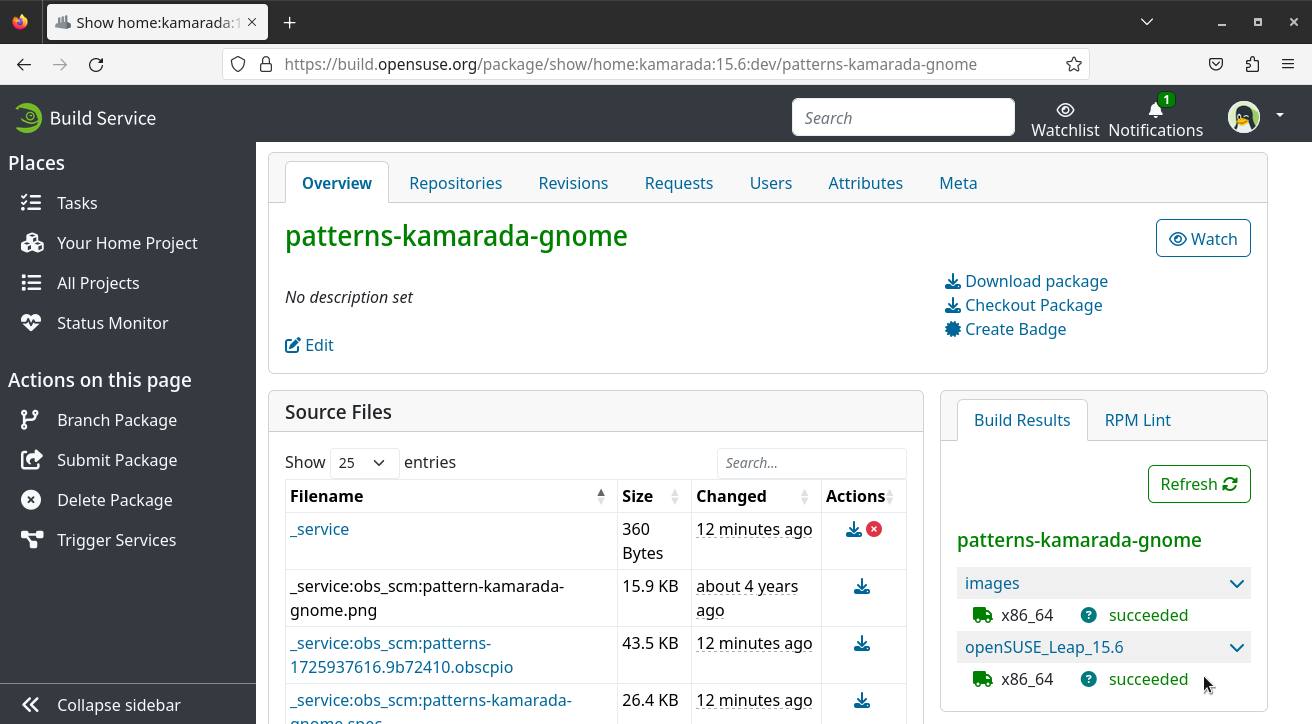How to make a Linux distribution based on openSUSE is a tutorial that I’ve been thinking about doing for some time now. Now that Linux Kamarada has some versions released (15.5 being the current) and another is on the way (15.6) I think I can explain how to do it. I decided to take the opportunity, since I’ve started working on the next version, to record the process and share how I do it, in case it’s useful to someone else.
Not necessarily you want to create a distribution to share online. Maybe you just want to customize openSUSE (or – why not? – Linux Kamarada) to install on computers at work. Or maybe you develop software and want to create a Live image containing your app, so that it can be easily tested by potential users or demonstrated at events. A Live system is a controlled environment, ideal for testing.
Whatever your goal is, this post and the following ones can help you achieve it.
The tutorial will actually consist of a few posts. As I progress in the development of Linux Kamarada 15.6, I will share what I am doing and how.
I intend to do something practical, so I won’t go into much detail about the tools – mainly Git, Kiwi and Open Build Service (OBS) – so reading this tutorial does not mean you won’t need to consult other sources of information. In fact, much of what I learned was “on the fly”: searching, trying, making mistakes, and asking for help on forums, groups, and mailing lists. So this tutorial will be more about showing the way and shortcutting the research, rather than being self-contained.
Today, we’ll see how to start developing the distribution: how to create the project on the Open Build Service and how to create the first package. I’ll show you how I kickstarted Linux Kamarada 15.6. Let’s go!
Ingredients: what we will need
As I mentioned in the Linux Kamarada 15.5 release news, Linux Kamarada development takes place at GitLab and OBS. I prefer to use Git for storing and managing source code and OBS for building and packaging, although I could use just OBS to do all of that. Feel free to use GitHub, GitLab, another Git service (like Bitbucket) or just OBS.
If you’re not familiar with OBS yet, read the first section – Meet the Open Build Service (OBS) – of this text:
Open it in a new tab and keep it open because we will come back to it later.
If you prefer to use GitHub, read this text instead:
I’m going to assume that you have an account on a Git service like GitLab or GitHub, that you can sign in to it, and that you’re familiar with Git already.
To host your project’s Git repositories, I recommend creating a group (in the case of GitLab) or an organization (in the case of GitHub), examples: gitlab.com/kamarada or github.com/kamarada. But you can also use your personal profile, example: gitlab.com/antoniomedeiros. For OBS, this makes no difference.
I’m also going to assume that you can already sign in with your openSUSE account to build.opensuse.org. If you don’t have an openSUSE account, create one by clicking the Sign Up link at the top of that page.
Finally, I’m also going to assume that you’re using one of the openSUSE distributions (preferably Leap or Tumbleweed, but now there are many others) or a distribution based on them (like Linux Kamarada). If we’re talking about making a distro based on openSUSE, nothing seems more natural to me.
Install Git and osc (the OBS command-line client) on your computer:
1
# zypper in git osc
The Linux Kamarada pattern
In case you don’t know what patterns are in the openSUSE world, I explained that concept in this text:
That text presents the users point of view. Now we are going to look at the distribution developers point of view.
To define which packages make up Linux Kamarada, I created a pattern for it, taking other openSUSE patterns as reference:
That’s why it’s easy, as I said in the Linux Kamarada 15.5 release news, to turn any openSUSE Leap installation into a Linux Kamarada installation: just add the distribution’s repository and install the patterns-kamarada-gnome package.
How to create patterns
If you want to see how patterns are defined in openSUSE, go to software.opensuse.org and search for patterns. Several packages whose name starts with patterns are listed. They all are patterns. Click one of them.
The next page lists the availability of this package for various distributions. Click the desired distribution (e.g. openSUSE:Leap:15.6) to view the source code for this package on OBS:
This page shows the files that make up the source code for the patterns-xfce package in the openSUSE:Leap:15.6 project. Among these files, the most important is the spec file.
If you don’t know what a spec file is and/or are new to RPM packaging, take a loot at:
- Fedora RPM Guide (note that this links to the Wayback Machine since the Fedora Project for some reason removed the book, here’s also my own PDF copy I downloaded back in 2014)
- RPM Packaging Guide
- openSUSE:Packaging guidelines - openSUSE Wiki
In short, the spec file defines the RPM package. In the case of a pattern, this file gives the name and description of the pattern and its dependencies (required, recommended and suggested packages). For instance, this is the spec file for the XFCE pattern:
The source code for the Linux Kamarada pattern can be seen at:
- gitlab.com/kamarada/patterns (link points to the 15.5 branch)
The main files are:
patterns-kamarada-gnome.spec, which defines the pattern, andpattern-kamarada-gnome.png, which is the pattern icon.
Opening the spec file, right at the beginning we have the Name, the description (Summary) and the Version of the pattern:
1
2
3
4
5
6
7
8
9
Name: patterns-kamarada-gnome
Summary: Linux Kamarada with GNOME desktop
Url: https://gitlab.com/kamarada/patterns
Version: 15.5
Release: 0
Group: Metapackages
License: MIT
BuildRoot: %{_tmppath}/%{name}-%{version}-build
Further on, we have the line that defines the pattern icon:
1
Source0: pattern-kamarada-gnome.png
And throughout the file we have the pattern dependencies listed.
The Linux Kamarada pattern depends on other patterns:
1
2
3
4
Requires: pattern() = apparmor
Requires: pattern() = enhanced_base
Requires: pattern() = x11_enhanced
Requires: pattern() = gnome_basis
(these lines are not together in the file, they are spread out, I will not reproduce the entire file here so that the article does not get too long)
I thought it best not to create too many dependencies on other patterns, so that I could have more control over which packages are installed. Instead, I copied the dependencies I wanted from those patterns and kept their names commented out for reference:
1
2
3
4
5
6
#Requires: pattern() = gnome
# kamarada/Linux-Kamarada-GNOME#62 - Wayland
Requires: gnome-session-wayland
Requires: xlsclients
Requires: xwayland
My strategy for packages, in general, is:
- packages that I consider essential are required (listed with
Requires) – if you don’t have these packages, I don’t consider you to have a Linux Kamarada installation (note that removing these packages will cause the removal of the pattern as well); and - translations or other packages that are useful but not for all computers and users are recommended (
Recommends) or suggested (Suggests) – for example, the hplip package is suggested, and comes installed by default, but depending on your printer, you can perfectly remove it (removing these packages won’t cause the removal of the pattern, I consider that you still have a Linux Kamarada installation even if you remove these packages).
Other examples of patterns
Here are examples of patterns that I look at to define mine and that may serve as reference for you as well:
- patterns-base: source code for the apparmor, base, console, enhanced_base, minimal_base, x11 and x11_enhanced patterns
- patterns-gnome: source code for the gnome_x11, gnome_basis, gnome_basic, gnome_games, gnome_imaging, gnome_internet, gnome_utilities and gnome_yast patterns
- patterns-yast: source code for the yast2_basis and yast2_install_wf patterns
Now that you understand the basic ideas behind patterns, let’s get to work.
Creating the pattern on Git
Note that I already have a Git repository for my pattern (gitlab.com/kamarada/patterns), so I’ll use that as a starting point. You may need to create a repository yourself.
I usually create a branch for each release (15.4, 15.5…) and a branch for development of each release (15.4-dev, 15.5-dev…). This way, I can experiment on the development branch and merge it back into the release branch when it’s ready.
I’m going to create the 15.6-dev branch from the 15.5-dev:
1
2
$ git checkout 15.5-dev
$ git checkout -b 15.6-dev
I changed the version in the spec file:
1
Version: 15.6
I committed the change and pushed it to the remote repository (since we are creating this branch, on the first push we need to define its remote):
1
2
$ git commit -a -m 'Upgrading from 15.5 to 15.6'
$ git push --set-upstream origin 15.6-dev
Creating the projects on OBS
In the openSUSE Build Service, access your home project via the Your Home Project link in the OBS sidebar. Switch to the Subprojects tab. Then click Create Subproject:
I set 15.6 as the Subproject Name and Linux Kamarada 15.6 as the Title, then clicked Accept:
Now we have an OBS project for Linux Kamarada 15.6 at:
I entered the home:kamarada:15.6 project and created another subproject, this one called dev, resulting in the home:kamarada:15.6:dev project:
If you go back to the subprojects list of your home project, you will see the two newly created projects:
Setting up the repositories
Go to the development project (in my case, home:kamarada:15.6:dev), switch to the Repositories tab and click Add from a Distribution:
Check the openSUSE Leap 15.6 repository:
Repositories are added to the project as soon as you check them. You don’t need to click any buttons. Go back to the Repositories tab:
Now we have the 15.6 repo which will host the RPM packages.
For each repository of our project, we can configure which other repositories from other projects it will consider when obtaining packages during build time.
Let’s add the openSUSE Leap 15.6 update repository. To do this, click the add icon.
Under Project, enter openSUSE:Leap:15.6:Update:
Under Repositories, keep the default standard selected and click Accept.
Since the openSUSE:Leap:15.6:Update repo already references the openSUSE:Leap:15.6 repo, and OBS has intelligence to realize this, we can remove the openSUSE:Leap:15.6 repo, to make our configuration leaner:
We need to create the images repo to host the ISO image and set it up according to the KIWI documentation. In earlier OBS versions, it was possible to do that via the GUI. Now, we need to specify it manually in the project meta configuration (Meta tab):
Just add:
1
2
3
4
5
6
<repository name="images">
<path project="home:kamarada:15.6:dev" repository="openSUSE_Leap_15.6"/>
<path project="Virtualization:Appliances:Builder" repository="openSUSE_Leap_15.6"/>
<path project="openSUSE:Leap:15.6:Update" repository="standard"/>
<arch>x86_64</arch>
</repository>
I also renamed the 15.6 repo to openSUSE_Leap_15.6 to keep the standard of previous Linux Kamarada releases.
Note that the images repo references the other repo of the same project (in this case, openSUSE_Leap_15.6).
In the end, if you go back to the Repositories tab, it should look like this:
Once this repository configuration has been done in the development project (in my case, home:kamarada:15.6:dev), you can do a similar configuration in the production project ( home:kamarada:15.6).
Creating the pattern on OBS
In the development project (in my case, home:kamarada:15.6:dev), switch to the Overview tab and click Create Package:
Give at least a Name to the package (in my case, patterns-kamarada-gnome) and click Create:
Once the pattern package has been created on OBS, let’s check it out to our computer to work on it locally (similar to cloning a Git repository).
Check out the entire OBS project:
1
$ osc checkout home:kamarada:15.6:dev
Then enter the package folder:
1
$ cd home:kamarada:15.6:dev/patterns-kamarada-gnome
Integrating OBS with Git
Now let’s integrate OBS with Git, so that the package source code is pulled from Git and compiled on OBS. For instructions on how to do this, see one of the following tutorials, depending on the Git provider you use (GitLab or GitHub):
First package ready
Finally, going back to the development project overview, we have our first package successfully compiled on OBS:
There are a few more Linux Kamarada packages that are compiled by this duo OBS + Git. With the script presented here, I’ll kickstart these packages as well.
Follow Linux Kamarada on your preferred social network to be notified of new episodes of this journey.
Continue your reading:

